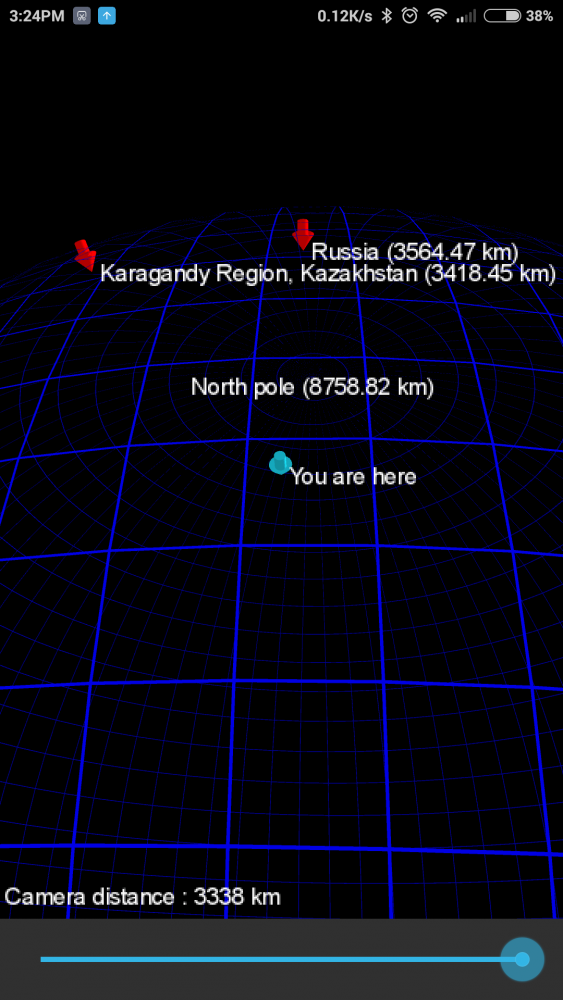Assalamualaikum everyone,
It has been about 3 month since I left IIUM (International Islamic University Malaysia). Technically, I’m still a student because I have not graduated yet, but my time in IIUM is practically over. So I figure I want to make a review of IIUM as a follow up to a popular article in this blog which is The Past, Present and Future of IIUM .
I’ve tried to make this article a few time actually, starting before Ramadhan. But, I never got to finish it. I went so much into details, I can’t properly put into words what I thought about IIUM. But the more I delay this article, the more the memories become blurry.
To make this article simple, I won’t describe much about IIUM. I’ve describe it quite well on a draft before which I probably would publish on another article. This one is a summary of an introverted KICT (Kuliyyah of Information and Communication Technology) student towards IIUM. I won’t be discussing much on KICT as it deserve its own post. Additionally, it is mostly a criticism rather than a more positive outlook, which I’ve described quite well on the draft.
Feels of IIUM
In summary, the feels of IIUM is quite ‘garden-like’ and very safe. However, I think the safe part is not a very good thing because the world is not safe. Of course, there would still be theft or other crimes in IIUM, but you get the feeling that almost all people here is nice. The ‘safeness’ can be shown by the fact that IIUM provides residential place for all 4 years of study. Even through internship, you can request a room. This is in contrast to other university which sometimes do not provide a hostel for the older student. Because of this, I feel like there is a significant ‘gap’ between before IIUM and after IIUM. I feel like this is not very good towards the growth of the student.
Not only that, but the environment here is quite comfortable for a devoted Muslim. Too comfortable if you ask me. You can find musolla almost everywhere and the time of the course matches prayer time. Additionally, being pious here is not a very strange or contrasting characteristic. In some way, it is the norm. Because of this, it is quite easy to be a devoted Muslim here. However, the outside world is not so forgiving. Of course, that really depends on the place where you work, but if you are unlucky, finding time and place to pray can be a problem. Heck, I could see a situation where even praying five time a day can be seen as bordering extremism. If you have a daughter that you want to keep safe, I could see the point of sending her to IIUM. But if you want her to be independent and can handle the world and all it throws at her, she will need to work more.
It is quite strange that the criticism that I have towards IIUM is that ‘it is too comfortable for a devoted Muslim’. I sound like a ridiculous person. What are the other options? Reduce the number of surau? Make a course during prayer time? Of course not! IIUM did a great job of making it a comfortable university. From the perspective of the university, in this regard IIUM did a great job. But you have to keep in mind that the world can be a dangerous place and I don’t think IIUM did much to prepare the students for it. Of course, you could just find a job in a Muslim company. But in that sense, just being an employee seems to be the limit of an IIUM graduate.
Islamization – Synergy or Compromise
By the looks of it, IIUM aims to integrate Islam with worldly knowledge. I’m sure most, if not all of IIUM student would understand what this means. Basically, we have additional Islamic subjects. All of the student is required to take some Arabic class. And in our non-Islamic subject, additional mark is given if we could relate what we learn with Islam. By the looks of it, ‘general good’ is not considered Islamic enough.
The idea is that, by such integration, the university could create people who can contribute to the Ummah. People who have high education and at the same time, a devout Muslim. But for me, it seems like a compromise. The student are not really an Islamic scholar, and at the same time, the education is not particularly excellent. And sometimes, the course desperately try to integrate Islam up to a point where we have to wonder does this ‘adjustment’ violates Islam itself. Student who took the course IT and Islam would know what I mean. We could see how this forced integration work with the library opening hours. While other university open the library 24 hours a day, IIUM struggles to keep the library open throughout office hours as it will be closed during prayer time.
Of course, to some point, I’m exaggerating. IIUM student are more Islamic than other university student, and the education is kinda up to standard, up to some point. But it does not look like it is going any further. It looks like it struggle to strive for higher standard. For example, I have to take Arabic class, but it is so basic that I can’t speak Arabic. And most student can’t too. With that, I wonder should I even bother taking the Arabic class? Of course, there are one or two student who could fulfill this high standard, but one or two outlier does not represent IIUM as a whole. Of course, it is somewhat unrealistically high expectation to expect most of the student the be such angelic scholars, but right now, I can’t say that we are either angelic nor innovator.
Administration and Finance
The administration of IIUM have a bad reputation among IIUM students. I guess it is mainly for political reason. In case you did not know, IIUM is largely funded by the Malaysian government. It probably used to be different. In short, don’t say bad things to the government, or the administration would figure-out a way to filter out the ‘negative elements’. But in some way, it is due to the ‘alleged’ corruption. Or that is actually mainly because of its inefficiency. Or perhaps, all of it.
Among the most recent questionable decision is the 5 million ringgit fountain. Which is said to be a donation by the President of IIUM. The students are not very supportive of the change of the fountain because there are other things that should be replaced. For example, the notorious chairs of CAC hall. Or they could fund the covered walkway project that cost about 0.653 million ringgit, which is proposed by the SRC(Student Representative Council), which right now, is asking for donations from the student. Or they could replaced faulty air-conditionings throughout the university. Or, they could divide it by 5 and roughly double the budget given to SRC for 10 years. Or, they could divide it by 5 and distribute it to all kuliyyah’s student society which would (significantly?) increase their budget for 10 years. Or, all of them.. except the fountain.
There are other horror stories of course, but I’m not sure about those. The administration have such bad reputation that there are ‘advice’ among the student society saying that if you manage to get sponsorship from external party, do not pass the money to the financial department (that is the official way if I’m not mistaken) because you may never see the money again.
The name
There are some upsides in IIUM. The name of the university attract certain types of people who are passionate in their cause. I know one of the lecturer in KICT used to work in NSU in Singapore, but choose to work here because of Islam. There are other lecturers too that you can see that they care about the future of Islam. And there are various other students and staff that came here for a similar reason. More often that not, these individual forms the backbone of whatever that is amazing here. However, you get the feel that the administration is holding them back through various bureaucratic issues. Throughout my studies I feel like these people in particular is what keeping IIUM alive. Of course, in any University, it is the people who make up what it is. But a University should act as an enabler that helps the students and staff. But for some reason, I see it as the other way around. Regardless of the ‘penalty’, the asset is here. The name continues to attract such individuals and among the limited reasons to choose IIUM over other Malaysian university, this should be on the top list. But then again.. there is also USIM…
Summary
In some way, I think half of the criticism I have for IIUM (aside from the administration) is simply because it is just different. There are sayings in Islam that “They (the non-muslim) will never be pleased with you until you follow their way” (It is probably from the Quran, but I don’t remember exactly where and the translation is probably wrong). I guess this is probably the biggest argument towards my criticism. “Ignore the non-muslim and just follow our way”. But for some reason, people don’t think about inviting the non-muslim to follow our way. We are always looking for new enemies instead of new friends. This is especially critical in our times because working with non-muslim is inevitable. Instead of finding new ways to differentiate us from them, we should let them in to our worlds and see from our perspective. I believe that is the direction that IIUM should go. But then again, I could be wrong.
Another thing I want to point out is to not be afraid of something which is not Islamic. I’m not talking about things which are clearly haraam such as alcohol, I’m talking about things like Computers. Like I said before, sometimes the university desperately wants to integrate Islam with something that simply cannot be directly connected. It is as if, if you can’t Islamicize it, it is haraam. This is again, in a similar theme that we seems to look for things to be branded as illegal, as our enemy. If they are not us, they are our enemy. Personally, I think this is among the things that is holding IIUM back. We are too restricted, too terrified by such mindset.
For me, right now, IIUM is not the great education center that Muslim is looking for. It is simply playing catch up to other universities. Although I have to give it some credits for making an appealing environment for Muslim… to catch up.

